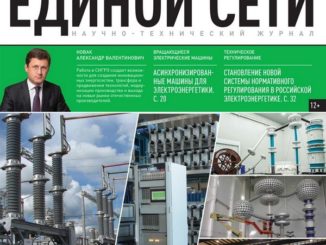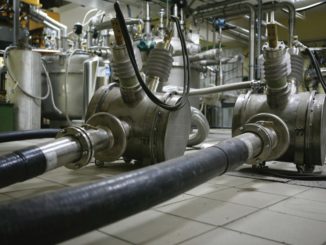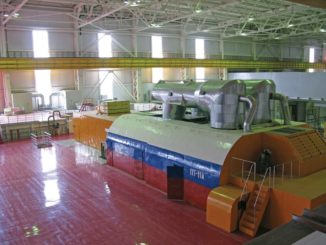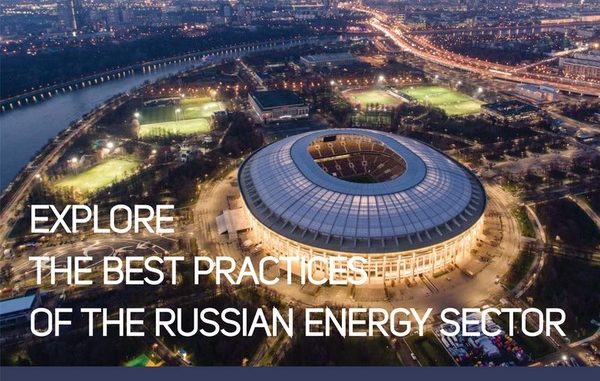
Перейти к списку статей номера
Prospects of using HTSC cable lines for long distances energy transfer
Authors: V.E. Sytnikov, Т.V. Ryabin – R&D Center at FGC UES, JSC (Russia), S. Yamaguchi, Yu. Ivanov – Chubu University (Japan)
Keywords: Superconducting cable line; power bridge; transmitted power; cryogenic station; critical current; gigawatt.
Abstract: The location of powerful electric power sources (nuclear power plants, hydroelectric power stations, wind farms) at great distances from large cities and electric power consumers, leads to the need to transport large energy flows over considerable distances. At the same time, the traditional scheme of power distribution assumes the use of high-voltage cable or overhead transmission lines (220-750 kV), which is stipulated by the desire to minimize energy losses during its transportation. This necessitates the creation of high-voltage step up and step down substations and leads to significant energy losses during its transportation and to alienation of large areas of land. The use of superconducting cable lines will significantly improve the efficiency, reliability and environmental friendliness of long-distance transmissions. With the current level of superconducting and cryogenic technology development, it is possible to create long superconducting cable lines for transportation of energy over distances of tens and hundreds of kilometers. The power of a single DC line can reach several gigawatts at a voltage of 100-200 kV, and the energy losses in it will be significantly lower than in traditional cable or overhead power lines. In our assessment of long cable lines, we will consider DC transmission lines, since any AC cable lines have a length limitation due to the charging currents which lead to a decrease in power at the far end of the line. This paper will briefly present the results of two largest projects in the world for construction of superconducting DC lines cooled by liquid nitrogen. This is the project to create a 1.0 km line in Hokkaido (Japan) and the project to build a 2.5 km line for the electrical network of St. Petersburg (Russia). Both projects are designed for a transmitted power of 50 MW at a voltage of 20 kV. Based on the experimental and theoretical results obtained by research groups in implementation of these two projects, the possibility of building energy bridges using superconducting technologies was shown for above-ground and underwater options. Estimates of transmission power, total length of the line and maximum distance between the cryogenic stations, energy losses and the required power of a cryogenic plant will also be presented. It will be shown that, it is possible to create superconducting transmission lines with a power of about 10 GW in almost any length. At the same time, cryogenic stations should be located along the line with a maximum step of 20 to 60 km. The possibility of increasing the distance between cryogenic stations by improving the thermal insulation of cryostats will be discussed.
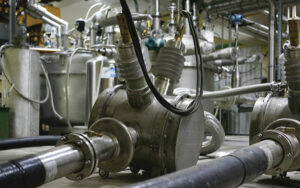
Digital substation test site
Authors: I.A. Kosolapov, V.V. Boykov, Y.I. Morzhin, S.G. Popov – R&D Center AT FGC UES, JSC
Keywords: digital substation; IEC 61850; DSS test site (DSS TS); process bus; station bus; testing and simulation facility; real-time digital simulator (RTDS).
Abstract: The introduction of the new technology «Digital substation», into the operational practice based on the IEC 61850 standard, is usually carried out through the pilot deployment of equipment. This technology is radically different from existing substation automation systems, primarily because traditional cable connections between primary and secondary equipment are replaced by segments of the local area network (LAN) of the substation.
The exchange of information between the primary and secondary equipment is carried out in digital form, including the secondary equipment connected through digital interfaces. Typical solutions for the organization of communications within the substation are in the process of formation, therefore new equipment is introduced fragmentarily to accumulate operational experience and test technical solutions.
To test a variety of technical solutions for the formation of a «process bus» and «station bus» it is necessary to conduct research at special test sites, rather than in existing electrical substation.
Creation active polygon based on the existing experimental substation with the ability to simulate disturbing effects in the adjacent electrical network and on an energy facility in real time using test-modeling complexes (such as, for example, Real Time Digital Simulator-RTDS) can signifi cantly reduce the development phase of a new Technology to verify the functional characteristics of equipment and to test various options for building LAN (typical solutions) for substations of various voltage classes.
After carrying tests on the polygon outin suffi cient volume will subsequently signifi cantly simplify the task of implementing the «Digital Substation» technology in the power grid complex, while verifying typical solutions for building LANs for objects of different voltage classes.
One of the most important areas for the advancement of Technologists «Digital substation» for implementation at power facilities is the verification of equipment for compliance with the IEC 61850 standard, i.e. its certification. Certifi ed equipment for compliance with the IEC 61850 standard of various manufacturers will ensure its joint operation at the power facility.
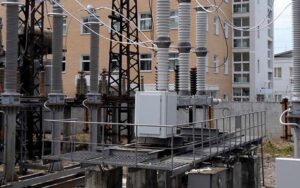
Machines for electric power industry
Authors: Y.G. Shakaryan, P.V. Sokur – R&D Center AT FGC UES, JSC, N.D. PINCHUK, O.V. Antonuk, V.Y. Novozhilov – Power Machines, PJSC, Y.D. Vinitsky – Ruselprom, JSC
Keywords: asynchronized machine; doubly fed machine; turbine generator; hydrogenerator; synchronous condenser; energy storage.
Abstract: Synchronous generators are traditionally used in the electric power industry. Asynchronized machines are a new class of electrical machine valve systemsthat have a series of advantages over conventional synchronous machines. Asynchronized machines have been widely used in thermal and hydropower stations, wind power plants and networks as reactive power compensation units.
Asynchronized machines are a newclass of electrical machine valve systemsthat have a series of advantages over conventional synchronous machines. Asynchronized machines are widely used in the power industry. In Russia, these are asynchronized turbine generators and reactive power condensers. In other countries, those are asynchronized hydrogenerators and wind power plant generators. There are a number of areas where asynchronized machines may also be found usable:electromechanical energy storages, electromechanical AC back-to-back stations between power systems, andan electrical drive based on asynchronized motors.
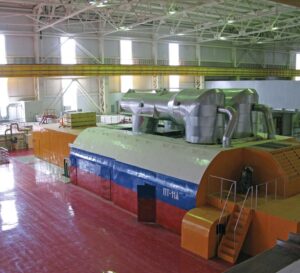
Fast-acting controlled shunt reactors to be utilized in the UNEG of Russia and abroad
Authors: A.M. Matinyan, M.V. Peshkov, V.N. Karpov, N.A. Alekseyev, V.A. Padalko, A.V. Antonov – R&D CenteR AT FGC UES, JSC, P.Y. Bulykin, IEDS GROUP, Moscow, JSC
Keywords: controlled shunt reactors; transformer-type controlled shunt reactors (TCR); CSR with on load tap changer control (OLTC).
Abstract: Controlled shunt reactors (CSR) are gaining increasing interest in the world today. For example, eight CSRs were installed in the Norwegian 420 kV power network in 2012–2013, with two more reactors in 2016. Seven CSRs were installed in 400 kV networks in Denmark in 2013–2015. Four CSRs were delivered in the USA in 2013–2015 to be installed in 345 kV and 143 kV networks.
Today, there is a revitalized interest in CSRs in the world. The experience accumulated by PJSC FGC UES in the area of application of CSRs is the most advanced in the world. Russian fast-acting CSRs offer many technical advantages (wider power control range, faster response, wider spectrum of tasks solved) in comparison with foreign analogs and can potentially be in demand on the global market.
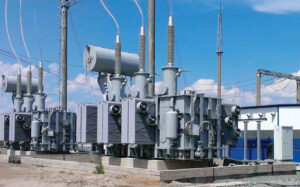
Computer-aided simulation for development and manufacture of plastically crimped conductors and design of transmission lines
Author: Leonid Gurevitch – Energoservice, JCS
Keywords: computer-aided simulation, finite element method, plastically crimped wires, deformation, wires for highways, construction, strength, modulus of elasticity.
Abstract: It is described the results of applying computer-aided simulation at all stages of creation of plastically crimped conductors used in overhead transmission lines, including optimization of the conductor design to achieve the service properties required by consumers and to determine the technological parameters of production.


